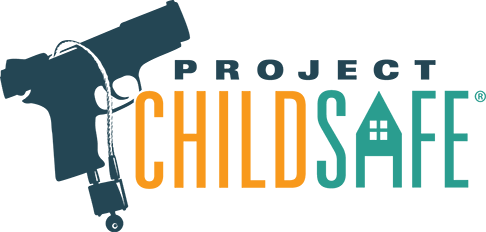Search
Cart
There are no items in your cart.
Login
Choosing Your Handgun: Revolvers, Semi-Automatic Pistols, and the 1911 Platform
Introduction
Firearms have been central to human history for centuries, and their evolution has produced a range of types, each with unique features, functionalities, and purposes. This article aims to provide a comprehensive comparison of three popular types of handguns: revolvers, semi-automatic pistols (including both traditional double-action/single-action and striker-fired varieties), and the 1911 platform.
.
Design and Mechanism
A. Revolvers
Revolvers are distinguished by their rotating cylinder, which typically holds five to nine rounds. Each chamber is loaded manually, and with every trigger pull, the cylinder rotates to align the next round with the barrel. Revolvers are either single-action, where the hammer must be manually cocked before each shot, or double-action, where a single trigger pull both cocks and releases the hammer.
B. Semi-Automatic Pistols
Semi-automatic pistols automatically eject spent cartridges and load new ones from a detachable magazine within the grip. This mechanism allows for quicker reloading and higher capacity. They are either single-action, where the trigger only releases the hammer, or double-action, where the first trigger pull cocks and releases the hammer, and subsequent pulls only release the hammer. Striker-fired pistols form a subset of semi-automatics, featuring a consistent trigger pull and usually lacking a manual safety.
C. 1911 Platform
The 1911 platform, designed by John Moses Browning, is a type of single-action semi-automatic pistol, where the trigger serves only to release the hammer. This design often results in a lighter and crisper trigger pull, which many shooters find improves accuracy. They typically feature a grip safety and a manual thumb safety.
.
Training Specifics
A. Revolvers
Training for effective use of revolvers necessitates mastering the long, heavy trigger pull, which requires a steady hand and strong finger to ensure accuracy. The shooter also must understand the function of the cylinder and how to load and unload it efficiently. Techniques such as "staging" the trigger (partially pulling the trigger to rotate the cylinder in anticipation of a precise shot) can also be beneficial. In the case of compact revolvers, mastering recoil control is crucial due to the higher perceived recoil and smaller grip.
B. Semi-Automatic Pistols
Training for semi-automatic pistols involves understanding the function of the slide and the use of detachable magazines. In the case of double-action/single-action pistols, the user needs to be proficient in handling the transition between the heavy first pull (double-action) and lighter subsequent pulls (single-action). This can be challenging as it requires adapting to two distinct trigger pressures within the same shooting sequence. For striker-fired pistols, the trigger pull is consistent, but due to the absence of a manual safety, users must adhere strictly to safe handling procedures and be mindful to keep their finger off the trigger until they are ready to fire.
C. 1911 Platform
Training for the 1911 platform requires understanding its unique features, such as the function of the grip safety and manual thumb safety. The lighter and sensitive single-action trigger requires careful handling to prevent unintended discharges. Users must be diligent about disengaging the manual safety before firing, which can require additional practice to become second nature. The 1911 platform, due to its single-action design, also necessitates the user to be comfortable with "cocked and locked" carry (hammer cocked with the safety on), which can be intimidating for some new users.
In all cases, proper firearm training involves not only understanding the specific mechanics of the firearm but also mastering basic principles such as aiming, grip, stance, breath control, and follow-through. Regular practice is crucial to maintaining proficiency and ensuring safety.
.
Reliability
A. Revolvers
Revolvers are known for their reliability due to fewer moving parts and lack of reliance on the energy of the cartridge to cycle the action. However, clearing malfunctions, such as a misfire, is generally more difficult than in semi-automatic pistols.
B. Semi-Automatic Pistols
While generally reliable, semi-automatic pistols may be more prone to malfunctions due to their complexity. However, clearing malfunctions is often quicker and easier than with revolvers. Striker-fired pistols, due to their simpler design, typically offer increased reliability over traditional semi-automatics.
C. 1911 Platform
The 1911 platform's reliability depends largely on the quality of manufacture. High-quality 1911s are known for their excellent reliability, but lower-quality models may suffer from occasional jams or feeding issues.
.
Capacity and Reload Speed
A. Revolvers
Revolvers typically have a lower ammo capacity and slower reload speed due to their design, though speedloaders can expedite the reloading process.
B. Semi-Automatic Pistols
Semi-automatic pistols generally have a higher capacity and quicker reload times, thanks to their detachable magazines. Striker-fired pistols follow this trend, offering a balance between capacity and reliability.
C. 1911 Platform
Standard 1911 pistols typically have a magazine capacity of 7 to 8 rounds, less than many modern semi-automatic designs but comparable to most revolvers. Extended magazines can increase capacity, and reloading follows the standard semi-automatic principle.
.
Ergonomics and Recoil Management
A. Revolvers
Revolvers' ergonomics can vary widely depending on their size. While larger revolvers can offer better recoil management due to their weight, their higher bore axis can lead to more pronounced muzzle rise. Additionally, their round cylinder design might result in a bulkier grip that may not fit all hand sizes comfortably. On the other hand, compact or snub-nose revolvers, commonly used for concealed carry, often have a much smaller grip and lighter weight. This can lead to a higher perceived recoil and require a stronger grip and more shooting experience for effective use.
B. Semi-Automatic Pistols
Semi-automatic pistols come in a wide range of sizes and styles, offering more ergonomic flexibility. Their design often allows for a higher grip, closer to the bore axis, which can improve control. Striker-fired pistols, with their consistent trigger pull, can often improve shot-to-shot accuracy.
C. 1911 Platform
1911s are known for their ergonomic design. They typically have slim, single-stack magazines, making the grip more comfortable for a wide range of hand sizes. The angle of the 1911's grip is also praised for its natural pointability.
.
Conclusion
Revolvers, semi-automatic pistols, and the 1911 platform each have unique strengths and weaknesses. Revolvers offer simplicity and reliability, making them suitable for home defense and certain concealed carry applications, but their ergonomics and recoil management can vary widely depending on size and can pose challenges for some shooters. Semi-automatic pistols, including striker-fired models, provide higher capacity and faster reload times, suitable for law enforcement, military personnel, and competitive shooting, but they require diligent maintenance and handling. The 1911 platform balances capacity, reliability, and ergonomics, making it a favorite among firearm enthusiasts. As with any firearm, the best choice depends on the user's specific needs, comfort, and training. Regular practice and understanding of the chosen firearm is crucial for both safety and effectiveness.
NEWSLETTER










Leave a Comment